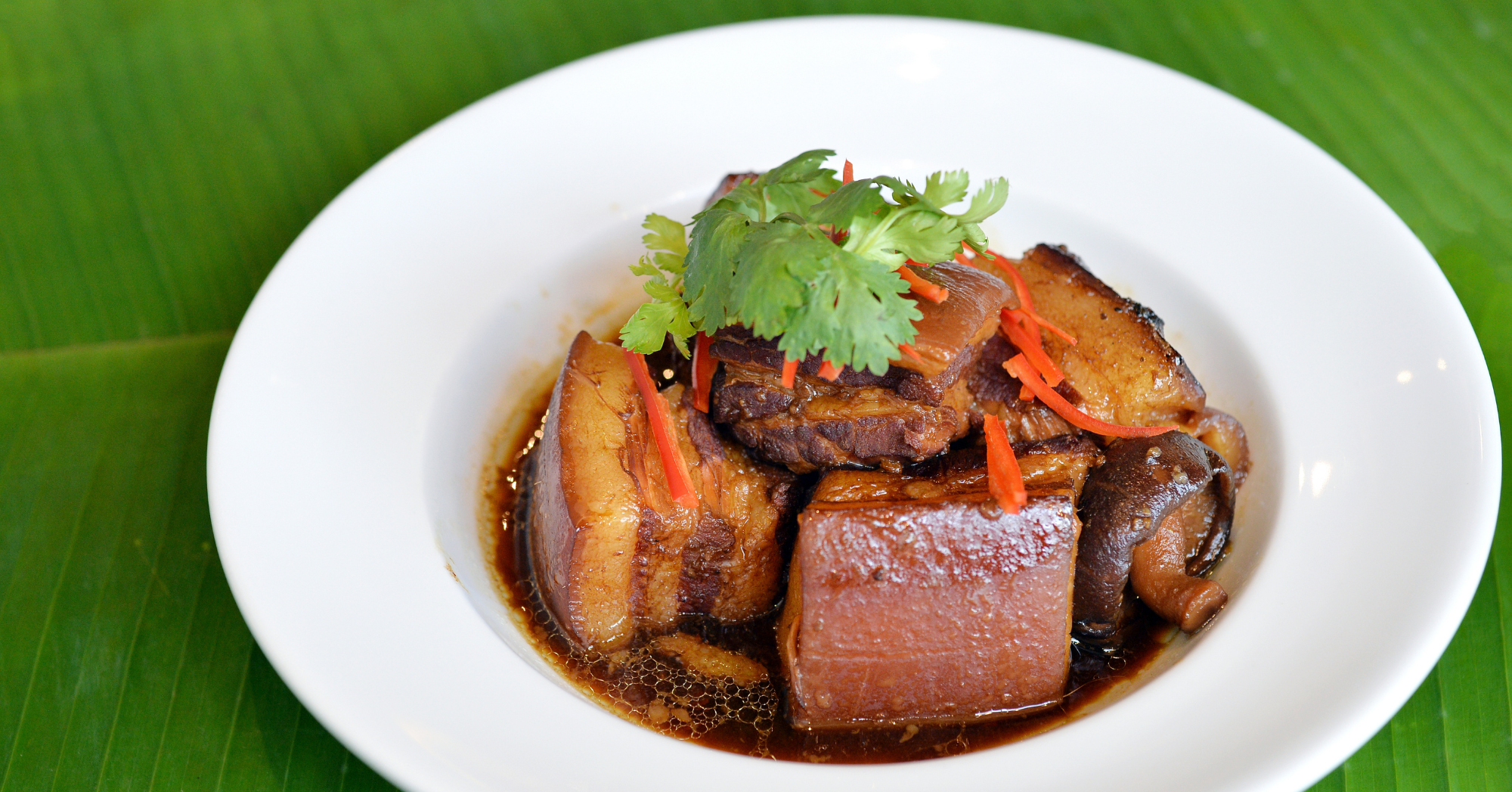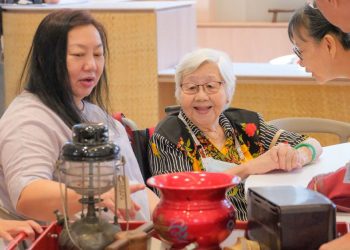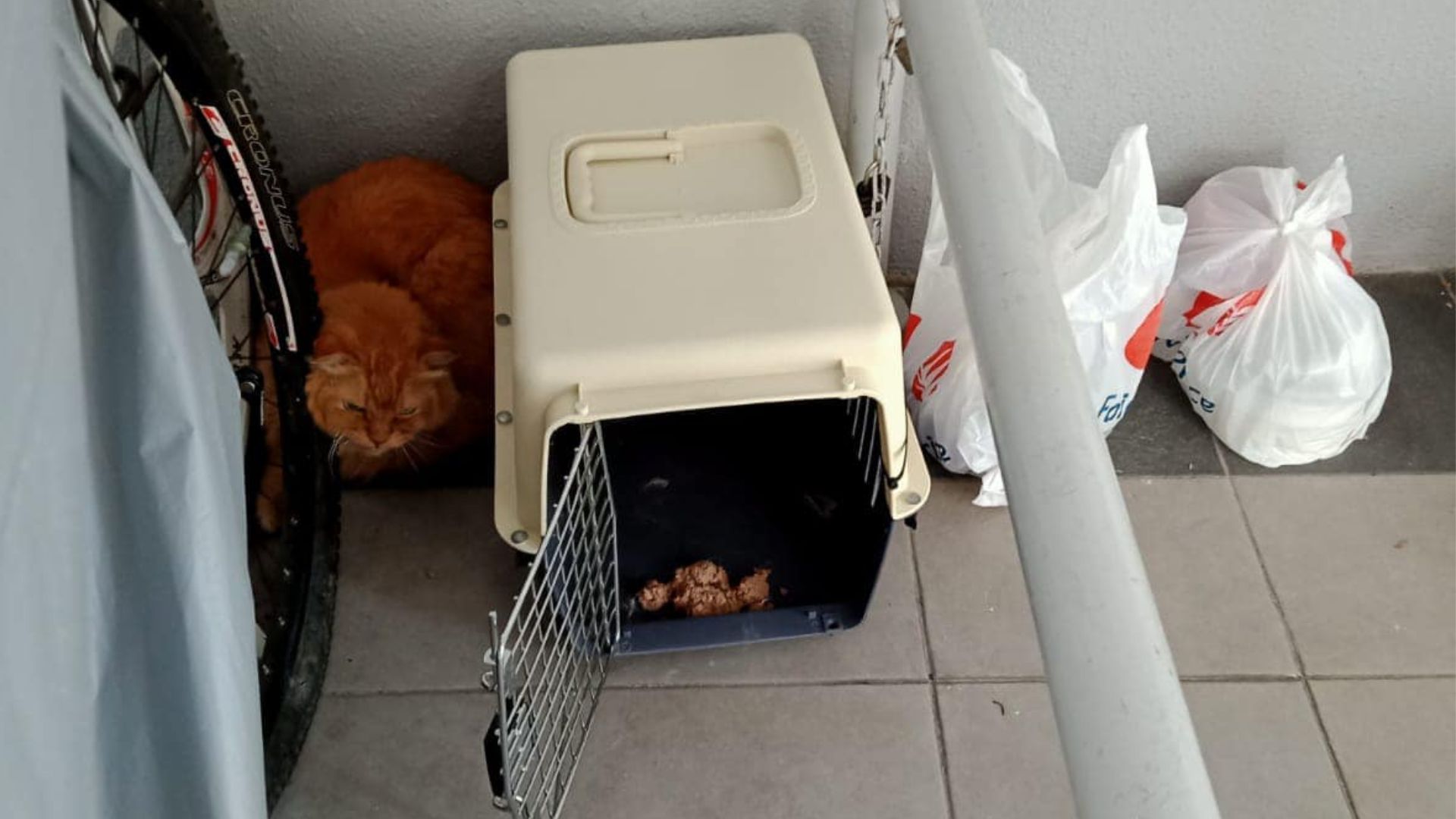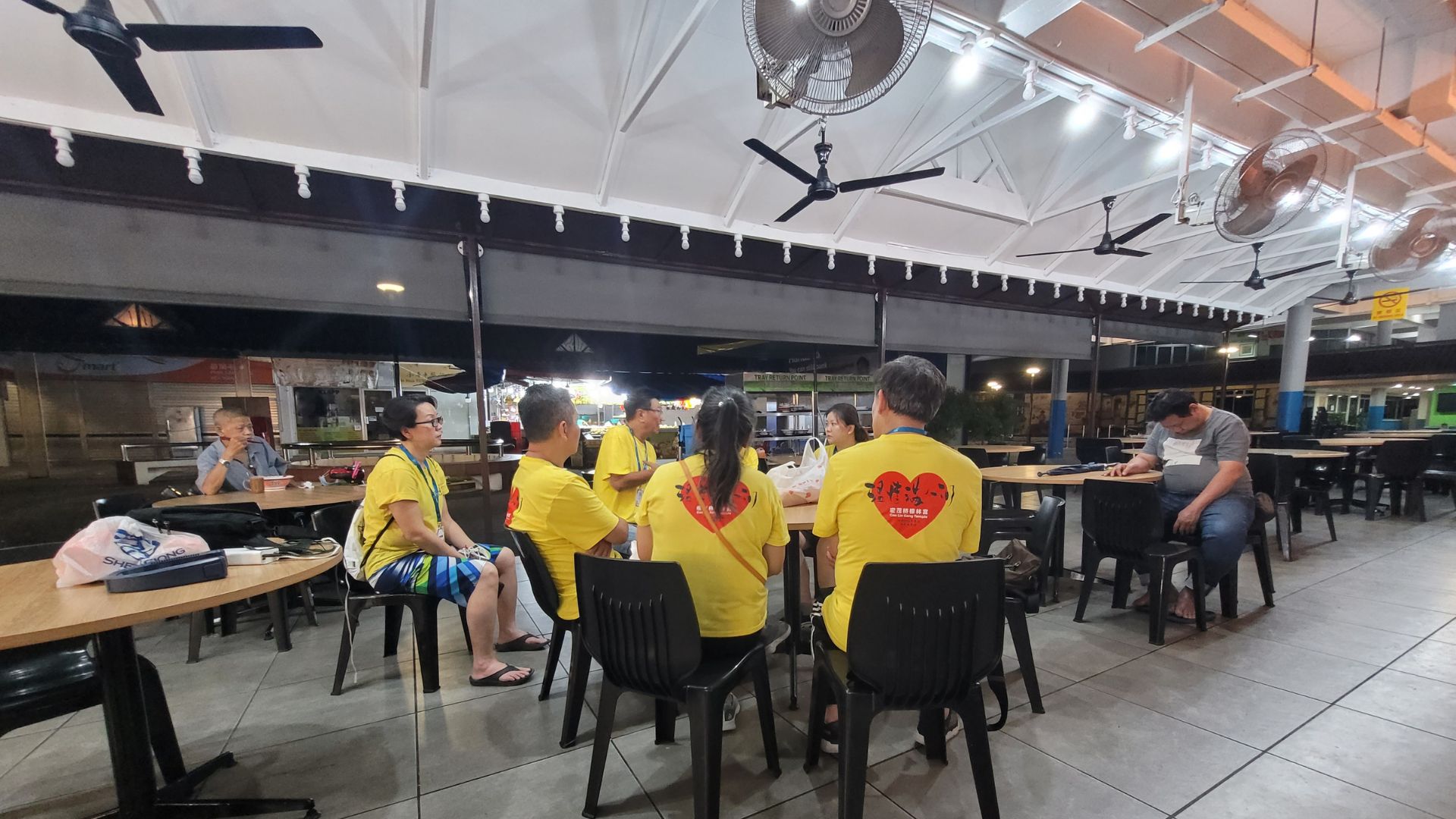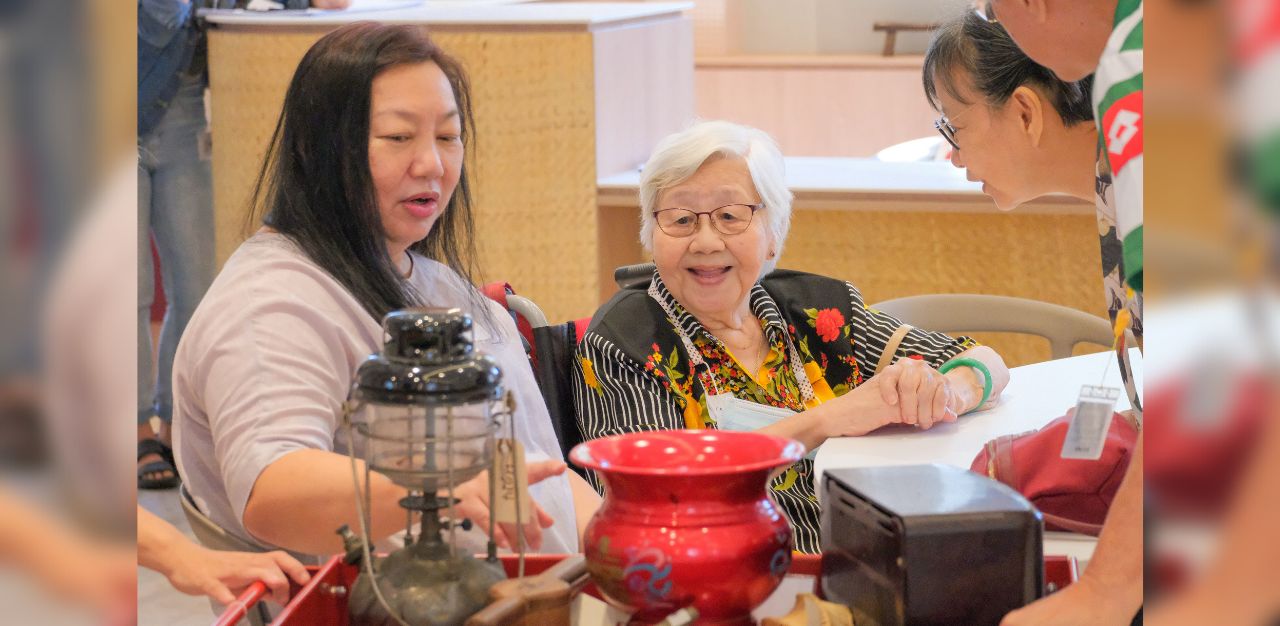By Joel Lee, as told to Raewyn Koh.
Growing up, my grandmother was the one who looked after me. Both my parents worked, and my grandmother insisted money would be wasted on getting a maid to babysit me, when she was more than capable of doing so.
Ah Ma, as I affectionately call her, is a doting grandmother. Although her Peranakan background meant she was strict when it came to homework, she was loving in all other areas – especially when it came to food.
Babi pongteh, or Peranakan-style braised pork, is her signature dish. Thick-cut pork belly is braised in a garlicky gravy that is both savoury and sweet, and served over steaming white rice. It is a dish that she has made weekly since I was a baby.
Missing granny’s food because of COVID-19
This is the first time, in a very long time that I have not had my Ah Ma’s babi pongteh. Because of the coronavirus, I have chosen to isolate myself away from her, to ensure she doesn’t get infected.
Although I am not a frontline healthcare worker, my line of work involves close contact with construction workers, many of whom are migrant workers living in dormitories. Unfortunately, the COVID-19 pandemic hit migrant workers hard, with tens of thousands of them being infect from living in cramped quarters.
To me, it is safer to not meet Ah Ma at this time, but I do miss her and her food a lot.
I have also moved out of my family’s home and into a studio apartment to keep the rest of my family safe as well. Some may call this going overboard, but many of my family members have a weak immune system, and I do not want to be the one responsible, should they be infected.
Meeting over FaceTime
So instead of joining my family for weekly dinners with Ah Ma, I stay home and connect with her via FaceTime instead. She is slow with technology but has since picked up the basics through some trial and error, and help from her tech-savvy grandchildren.
When we connect, I always ask the one phrase we have all been taught to say to our elders.
“Ah Ma! Jiak ba beh?” (‘Grandma, have you eaten?’ in Hokkien).
She usually replies that she has, then goes on about how much she misses me and wants to see me. The sentiments on my end are the same because I am a granny’s boy.
A taste of granny’s… but not really
When I first told her that I wouldn’t be able to visit her for dinner, she complained about who would finish the dishes she would cook. The Peranakan matriarch is a force to be reckoned with in the kitchen, often cooking at least four dishes and a soup whenever we come over for dinner. Her food is so good that there are usually no leftovers by the end of dinner, but very bulging bellies in pants with belts loosened.
Ah Ma has since taken to cooking an extra portion of babi pongteh for my family to take home and drop off at my place after dinner, but it isn’t the same. Maybe it is because her dapao-ed (takeaway) babi pongteh isn’t consumed fresh, or maybe it is because she isn’t there to tell me to eat more because I’ve gotten skinny from running so much. Either way, it just doesn’t beat eating her babi pongteh at her place while she fussed over everyone to make sure they were well-fed.
Making granny’s legacy on my own
Recently, however, I decided that I would try cooking babi pongteh on my own. Through some coordination, my cousin, Nicole, managed to help secure the ingredients I would need for the dish. Then, she stationed herself with Ah Ma in her home to help with the tech stuff, while I positioned myself over my two-hob stove to get ready to learn the tricks to making a delicious pot of babi pongteh.
We got off to a rocky start – there were technical fumbles like a blurry video feed because of a dropped internet connection, as well as Nicole not knowing where to focus as Ah Ma scurried around the kitchen to get her ingredients.
I also tried to get Ah Ma to walk me through her mise en place but like many other Asian cooks, she didn’t use measuring spoons, preferring to rely on taste and sight only to make her dish.
Eventually, I figured out Ah Ma’s arbitrary measurements (“just add until you feel it is enough”) and I managed to follow step by step, from the preparation of the pork belly to the braising of the meat.
While waiting for the pork to cook, I took the chance to catch up with Ah Ma, making sure she was looking after herself well, and not being burdened by Nicole being there (she wasn’t, of course). We discuss the possibility of her getting the vaccine once it’s available in Singapore. She also asks again if it is really necessary to isolate myself like this away from the rest of the family. It is a difficult question to answer, but I change subjects, so we don’t have to harp on it for too long.
A long-awaited taste
After an hour and a half, the babi pongteh was ready, and I served myself a portion, while Ah Ma served herself and Nicole.
“Ah Ma, jiak!” (Grandma, please eat!)
“Orh, ah-boy jiak!” (You too!)
For the first time in nearly nine months, my grandmother and I were able to face each other and eat a meal together.
My first taste of the babi pongteh I have made all on my own immediately brings me back to sitting at Ah Ma’s white marble dining table laden with other Peranakan dishes and bottles of condiments that have long expired, but Ah Ma insists are “still good”.
I wasn’t physically with her, but the taste of her babi pongteh made it feel like I was.
Ah Ma asked over FaceTime how it is. “It’s good,” I told her. “But not as good as yours, of course.”
“You’ll get there soon; you just need more practice,” Ah Ma replied.
The rest of the meal was eaten mostly in silence. On a few occasions, I could see my Ah Ma wipe tears away from her eyes. I also felt tears start to well up in mine but blinked them back before Ah Ma could see them.
“Take care, Ah Ma. I will see you soon, okay?” I said before we hang up.
“Ah-boy, you make babi pongteh for Ah Ma next time.”
“Okay, I miss you, Ah Ma.”
“Ah Ma misses you too.”
We may be separated for now, but at least we have babi pongteh.
Ah Ma’s Babi Pongteh
Pound:
- Handful of shallots (about 6 pieces)
- 5 cloves of garlic
Mix:
- 2 tbsp fermented soybean paste (tau cheo)
- 2 tsp dark soy sauce
- 1 tsp light soy sauce
- 1 tbsp sugar
- 2 tbsp gula melaka/palm sugar
- Salt (it is advised to taste before salting, as it may not be needed)
Other ingredients:
- Cooking oil
- 1 stick of cinnamon
- 1kg pork belly cut into 2cm-thick slices
- 5 more cloves of garlic
- Handful of dried shiitake mushrooms with stems removed, soaked in water (about 5-8 mushrooms total)
- Sambal belachan
Steps:
- Pour oil into a wok – there should be about 2cm of oil – and heat over medium heat. When oil starts to smoke, fry shallot and garlic paste with cinnamon bark until fragrant, then add fermented soybean paste mixture and fry until heated through.
- Toss in pork slices and fry until each piece is coated with the sauce. When the sauce gets dry, add in about half a cup of water to deglaze the wok. Then, turn up heat to high and fry until most of the water has boiled off. Pour in more water to cover the pork completely and cook until it boils for about five minutes.
- Transfer pork and sauce from wok into a claypot, then add remaining garlic cloves and rehydrated shiitake mushrooms. Cover and let simmer for about one-and-a-half hours, or until pork is tender.
- To make it spicy, mix in as much sambal belachan before serving, otherwise, leave it out and have guests add the sambal on their own.
- Serve with jasmine white rice.
